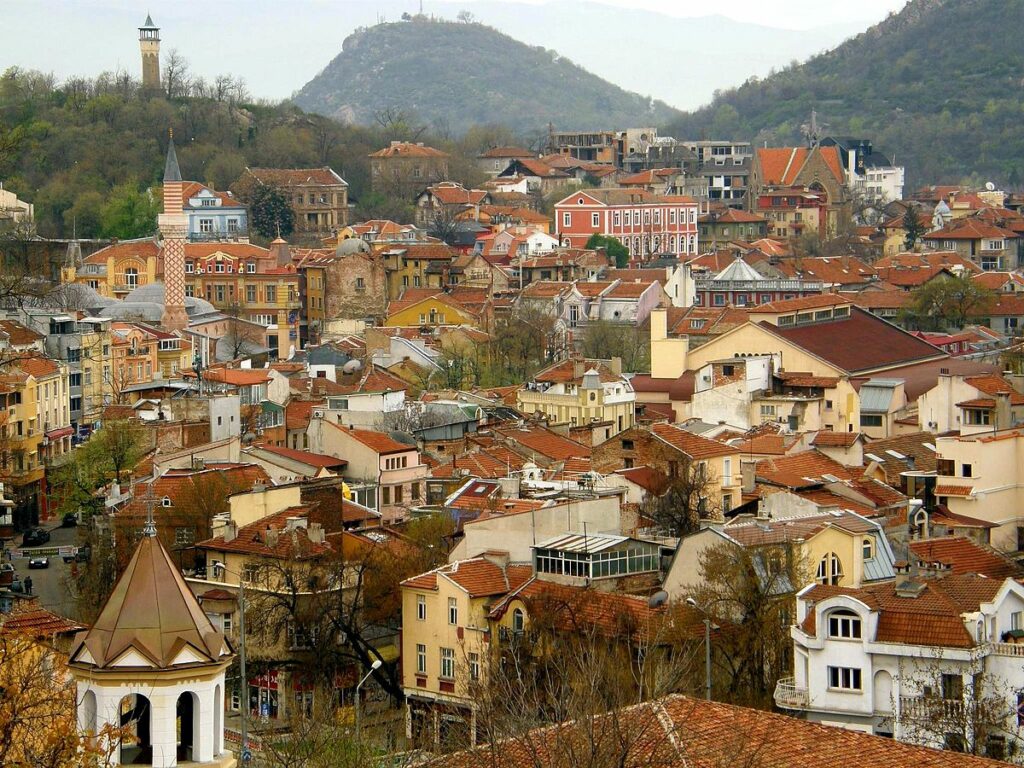Plovdiv, Bulgaria: A Timeless Tapestry of History, Culture, and Urban Elegance Unveiled

Introduction:
Nestled on the banks of the Maritsa River, Plovdiv, Bulgaria, stands as a living testament to the rich heritage, cultural diversity, and enduring charm that define this ancient city. As one of Europe’s oldest continuously inhabited cities, Plovdiv weaves together the threads of history, architectural splendor, and contemporary vitality. This extensive article embarks on an immersive journey through Plovdiv, unraveling its historical layers, architectural wonders, cultural treasures, and the vibrant spirit that makes it a jewel in the heart of Bulgaria.
Historical Layers:
Plovdiv’s history unfolds like a storybook, with chapters dating back over 6,000 years. Originally settled by the Thracians, Plovdiv has been a crossroads of civilizations, witnessing the rise and fall of empires such as the Persians, Greeks, Romans, Byzantines, Bulgarians, and Ottomans. The city’s strategic location, nestled between the Aegean Sea and the Balkan Mountains, has played a pivotal role in shaping its destiny.
The Old Town of Plovdiv, often referred to as the “Architectural and Historical Reserve,” transports visitors to different epochs. The Ancient Theater, built during the reign of Emperor Trajan in the 2nd century AD, stands as one of the best-preserved Roman theaters in the world. The Roman Stadium, an impressive archaeological site, reflects Plovdiv’s prominence during the Roman era.
Architectural Wonders:
Plovdiv’s architectural landscape is a captivating blend of Roman, Byzantine, Ottoman, and Bulgarian influences. The Old Town, with its cobbled streets, colorful houses, and charming courtyards, is a testament to the city’s medieval legacy. The Roman aqueduct, an engineering marvel, once supplied water to the city, and remnants of its arches can still be seen today.
The Nebet Tepe, one of the city’s seven hills, offers panoramic views of Plovdiv and is home to ancient ruins, including the foundations of a Thracian fortress. The Kapana District, a lively and artsy neighborhood, exemplifies Plovdiv’s commitment to urban renewal, with its vibrant street art, trendy boutiques, and cozy cafes.
Cultural Treasures:
Plovdiv’s cultural richness is embodied in its museums, galleries, and festivals that celebrate the city’s artistic spirit. The Plovdiv Regional Historical Museum, housed in a magnificent neoclassical building, showcases artifacts spanning the Thracian, Roman, Byzantine, and Bulgarian periods. The Ethnographic Museum, set in a beautifully preserved Revival-period house, provides insight into the traditional crafts and lifestyle of the region.
Plovdiv’s commitment to the arts is evident in events like the Plovdiv International Fair and the Night of Museums and Galleries, which transform the city into a cultural hub. The Ancient Theater hosts the annual Opera Open festival, attracting artists and audiences from around the world to enjoy performances against the backdrop of ancient ruins.
Creative Districts:
Plovdiv’s creative districts, such as Kapana and the Tobacco Town, contribute to the city’s dynamic cultural scene. Kapana, once the heart of Plovdiv’s craftsmen and traders, has been revitalized into a bohemian quarter with narrow streets, art studios, and a lively atmosphere. The Tobacco Town, a former industrial area, has been transformed into a cultural and creative hub, hosting galleries, studios, and trendy spaces.
These districts reflect Plovdiv’s commitment to fostering a vibrant arts and crafts community, where local creatives and entrepreneurs converge to showcase their talents. The synergy between historical architecture and contemporary creativity makes these districts integral to Plovdiv’s identity.
European Capital of Culture 2019:
In 2019, Plovdiv held the prestigious title of European Capital of Culture, a designation that brought international attention to the city’s cultural richness. The year-long program of events, performances, and exhibitions showcased Plovdiv’s diverse cultural heritage and contemporary artistic achievements. The program emphasized themes of inclusivity, collaboration, and the role of culture in fostering dialogue and understanding.
Plovdiv’s tenure as the European Capital of Culture left a lasting legacy, prompting ongoing initiatives to enhance the city’s cultural infrastructure, promote local artists, and strengthen ties with European cultural networks.
Natural Beauty:
Plovdiv’s natural surroundings contribute to its allure, with the Rhodope Mountains and the Maritsa River enhancing the city’s picturesque landscape. The Tsar Simeon Garden, a green oasis in the city center, offers a tranquil retreat with its manicured lawns, fountains, and sculptures. The Bunardzhik Hill, crowned by the Alyosha Monument, provides panoramic views of Plovdiv and the surrounding mountains.
The Rowing Canal, a serene waterway along the Maritsa River, invites locals and visitors to enjoy leisurely walks, jogging, and recreational activities. Plovdiv’s commitment to green spaces and sustainable urban development aligns with its reputation as a city that values the harmonious coexistence of nature and culture.
Culinary Delights:
Plovdiv’s culinary scene is a delightful fusion of traditional Bulgarian flavors and contemporary gastronomy. The city’s diverse restaurants, from cozy taverns to upscale eateries, showcase the rich tapestry of Bulgarian cuisine. Local specialties such as kavarma (slow-cooked meat and vegetables), banitsa (a savory pastry), and kufte (grilled meatballs) tantalize the taste buds of locals and visitors alike.
The Kapana District, in particular, has become a gastronomic hub, offering a plethora of cafes, bistros, and restaurants serving both Bulgarian and international cuisines. Plovdiv’s vibrant street food culture adds to the culinary experience, with food festivals and markets celebrating the region’s diverse culinary heritage.
Conclusion:
Plovdiv, Bulgaria, emerges as a city that transcends time, seamlessly blending its ancient heritage with a modern, dynamic spirit. From the echoes of Roman footsteps in the Ancient Theater to the lively ambiance of Kapana’s creative district, Plovdiv invites visitors to explore its multifaceted identity. As the city continues to evolve, embracing cultural diversity, artistic innovation, and sustainable development, it stands as a beacon of resilience and creativity in the heart of Bulgaria.
Plovdiv, with its timeless tapestry of history, culture, and urban elegance, beckons the world to partake in its vibrant narrative. Whether strolling through the Old Town’s narrow streets, savoring local delicacies in Kapana, or enjoying the panoramic views from the Nebet Tepe, Plovdiv promises an unforgettable journey through the ages, where the past and present coalesce in a harmonious celebration of Bulgaria’s cultural gem.




